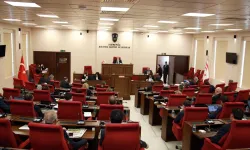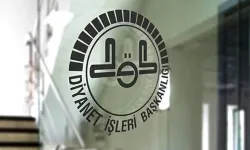Article: Aslı Özgen
Photographs: Burçin Tuncer
Neolithic ruins might not be exciting for all. The era that is termed as “Neolithic” is particularly interesting; during this era the foundations of our current lifestyle were laid and radical changes that triggered humanity to break away from the nature and to dominate over it took place. Vrysi carries with it thousands years long cultural heritage that has survived until today. Its location by the sea has been its magic and curse at the same time. Today, the ruins of this city is about to fall down to the sea and disappear.
It deserves attention
It is told that Vrysi was established by the civilisation of Cilicia from Anatolia during B.C. 4000s. It lies in the arms of the seaside that is located in couple of kilometres east of Kyrenia, the pearl of coasts in northern Cyprus. Some remnants of houses can be seen in Vrysi of which archaeologists have been able to examine only a percentage. The sea is continuously carving the rocky foreland on which this rare city sits on and the whole city will be buried in water soon. Although visitors cannot enter the city, they can walk around it to browse through. If you had the chance to see the tools and goods that were from this site and are currently being exhibited in the Kyrenia Castle, try to remember them one by one. The pieces that survived until today and currently sit waiting in the stylised atmosphere of a museum were in the houses and the hands of these people 7000 years ago during the era which would later be defined as Neolithic. Now, we delve into the mysterious past of Vrysi. Our guide is a woman who lived and raised her children in this city 7000 years ago when the city was already established and settled in. Her voice comes to us though the waves from the depth of the past:
“Hello, stranger. Welcome to our village. Let your eyes browse but do not dare to touch! My people have lived here more than 1000 years. Our ancestors are buried under these huge stones. Imagine that children’s laughters were echoing here, we were grinding wheat, carving stones and cutting firewood. We were a happy community. We used to work hard and grow large amounts of crops. We were always wise enough to save some of it. Therefore, we never starved during drought or scarcity. Disregard the location of our village by the sea. We were not going fishing very often. We had sheep, pigs and goats. Our men used to hunt in the dense forest near our village. We would also go to the forest to gather carobs, figs, lemons and olives. We used to grow wheat and barley. We used to have cats and even dogs, as we always had excess food. We had anchors, axes, knives, cutters and mills from stones. We used to make needles and fishing lines from bones.
What is left of our village now is six houses. When I was living, there were twenty houses on these lands. The houses were built in groups as family members still wanted to live close to each other as their family expanded. Back in my time there were a lot of extended families. We lived here for long years from one generation to the next. Our ancestors who had not known how to sow the land were able to stay in smaller groups. Yet this would not last long either, maximum one year. Back in the old times, people would only come together for celebrations, festivals and weddings only to separate again to find food. There was no way of knowing what the wild nature would provide where, so they had been constantly looking for food and catch. There had been scarcity on the last days of winter and spring in general. Old people and young children had not been strong enough to survive these hard days and died.
During the times when the land was not sowed, it was not easy to save food for winter. Our ancestors secured their food by digging deep wells with traps around them to pile and save their catches and gathered food in. Yet the wolves, maces and insects were not too late to reach these wells. Our ancestors knew about making pottery by hardening the soil with fire. However, these pots were too heavy and brittle for our ancestors who were nomads. Sowing the land and living by the fields, we also knew how to make pots from the soil and we were able to save our food in them safely. We did not experience scarcity. We were living here by the sea but the stream we were getting water from was a bit further away from our village. Before we were making pots from soil, we used to carry our water in pots made from the leather of animals. Imagine drinking water from a pouch that sat under the sun all day long! It has a very bad taste! We learned to value pots made from soil during such instances. Amphora is always better!
Amphora entered our lives fast and occupied a very importance place in them. Here is the proof: the archaeologists who dug this area found 62,000 pieces of amphora. Other tools and materials did not exceed one thousand. We used to make amphorae ourselves. Each family had a pattern of its own. You can observe the beauty and grace of these patterns on the pieces in the museum. Out potteries were white but we used to paint them in dark red or brown. We did not have potter’s wheel back then. We used to make each piece by hand and cook them in small ovens.
Do not be fooled in thinking that the patterns on our pottery are meaningless. They were our keepsakes from our ancestors. Our ancestors who took courageous boat trips from Mersin, Turkey to northern Cyprus brought these patterns along with them. In the beginning, they were hesitant and timid on these foreign lands. Half of their houses were dug underground for hiding. They also dug ditches around their houses to protect them from potential enemies. Slowly, they understood that there was not anything to be afraid of.
Our ancestors in Vrysi lived in rambling houses for a while when they first arrived. But our houses were strong and planned. We made paths between houses to be able to go to another house without stepping on dirt. The houses they were not entered with dirty feet would stay clean!
Our houses were planned to be rectangular. However, we were making houses in other shapes as well depending on the conditions of the land. We made the corners by circling them; this way it would be easier to clean the houses and keep them clean. The walls that we were plastering with clay were smooth. We laid rugs to the floor. Wooden columns supported the roofs of our houses with high ceilings.
We used to make frames from stones to the outer walls of our houses. We had storage cabinets made from large stone blocks. There was a big oven in the middle of each house. As the nights fell, our houses with one room that were lighted up with the fire in the middle would be very pretty. Usually, we used to light small oil lamps and place them all around the house. Everywhere would be bathed with a shaky orange light. Under this light, small sculptures we used to carve looked even more mysterious and eminent. These sculptures that you see in the museums were very important for us. They had a hidden power blessing our houses. Yet, such matters cannot be discussed with foreigners...
My community raised one hundred generations here, until an earthquake unsettled our village. After this earthquake, we were forced to leave our land that was no longer safe, although we left our hearts there. From that day on, the sea has been carving the rocky foreland on which our village sits for the last 5000 years. In the near future, the sea will swallow out village whole. When this happens, only the remnants of amphorae, needles from bones and mills will be left behind to remind us... In the silence of a museum in Kyrenia, North Cyprus.



